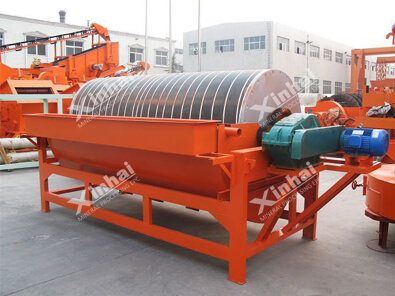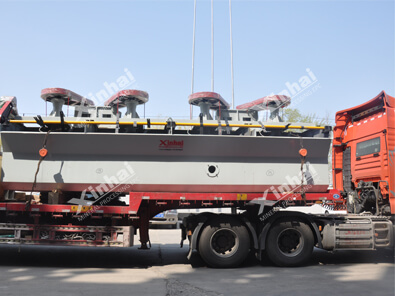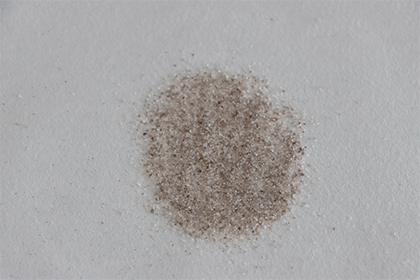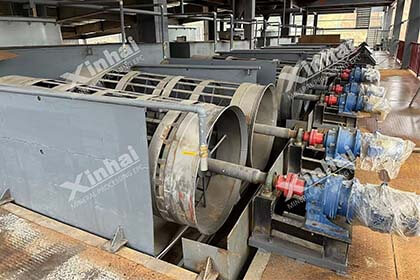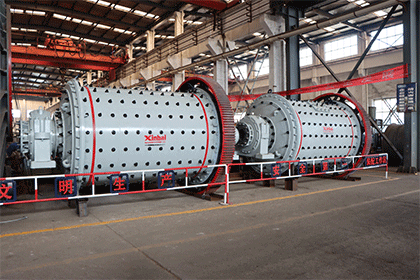How to Remove the Metal and Non-metallic Mineral Impurities in Quartz Sand?
 Shirley
Shirley
 Apr 23, 2023
Apr 23, 2023
 1291
1291
If you want to know more details about equipment, solutions, etc, please click the button below for free consultation, or leave your requirements!

Quartz sand is a common and widely used non-metallic material. Due to the demand in its application fields, the requirements for removing impurities from quartz sand during the beneficiation process are high. In this article, we will introduce the separation process of quartz sand and its common gangue minerals. The gangue minerals commonly found in quartz sand include metallic minerals such as hematite, magnetite, limonite, and ilmenite, as well as non-metallic minerals dominated by feldspar. We will explain these two parts separately.

01Separation of Quartz Sand and Metallic Minerals
BackThe metallic minerals in quartz sand are mainly iron-bearing minerals, which exist in the following forms:
In feldspar that has been transformed into clay or kaolin;
Adhering to the surface of quartz particles, forming a thin film of iron hydroxide;
Contained in heavy mineral impurities such as ilmenite;
Impregnated or infiltrated into quartz particles;
Contained in mineral grains such as mica and hornblende.
Because the forms of iron impurities are complex, the separation process is also diverse, mainly including the following five methods:
Scrubbing
It using mechanical force to abrade the surface of quartz sand to remove the thin film of iron and adhesive impurities. This method can also remove some iron minerals in clayish feldspar. The factors that affect the scrubbing effect include the structure and configuration of the scrubbing equipment, scrubbing time, and scrubbing concentration. The selection of scrubbing equipment should be determined based on the properties of the quartz sand mine through experiments. The scrubbing concentration is generally controlled at 50% to 60%, and the scrubbing time should be determined according to the preliminary achievement of the product quality requirements, which should be determined based on experiments.

Magnetic separation
It mainly used to remove magnetic minerals such as hematite, limonite, magnetite, and biotite. When the iron impurities in quartz sand are low, wet high-intensity magnetic separators are generally used for separation. The important influencing factor is the fineness of the selected minerals. Generally, the finer the quartz sand particles, the better the effect of separating iron impurities.

Gravity separation
It can remove heavy minerals in quartz sand, mainly ilmenite, whose density is greater than 2.9g/cm3. Spiral chutes are commonly used as quartz sand gravity separation equipment.

Flotation
It can be divided into two process flows: separate flotation of iron and mica, and combined flotation of iron and mica. These two methods use different reagent systems, mainly using petroleum sulfonate and pine oil to float iron, and using sulfuric acid as the slurry adjuster.

Bioleaching
In addition to the above three conventional beneficiation methods, bioleaching is also a method that can remove the thin film of iron on the surface of quartz. It mainly uses microorganisms such as Aspergillus niger and Penicillium to soak it. However, this technology has not yet been applied to large-scale industrial production.
02Separation of Quartz Sand and Non-metallic Minerals
BackQuartz sand has similar properties to non-metallic minerals such as feldspar and clay, so it is difficult to separate feldspar from quartz sand. To remove feldspar impurities, water washing, classification, de-sliming, flotation, and acid leaching are generally used.
Water washing and classification de-sliming
For quartz sand containing a large amount of clay minerals, water washing and classification de-sliming is an effective method to remove clay. It is commonly used as a preparation work for impurity removal and purification before quartz sand selection.
Flotation
The flotation process of quartz sand can be divided into fluorine-containing flotation and non-fluorine-containing flotation. Fluorine-containing flotation uses cationic collectors and hydrofluoric acid activators for separation. Non-fluorine-containing flotation uses sulfuric acid or hydrochloric acid as the activator of feldspar, and then uses the corresponding collector to separate feldspar. Under the same conditions, the flotation effect of hydrochloric acid as the activator is better than that of sulfuric acid.
Acid leaching
Acid leaching is an effective method to remove non-metallic mineral impurities in quartz sand, as quartz is chemically stable and insoluble in acids other than hydrofluoric acid. Commonly used acids include sulfuric acid, hydrochloric acid, nitric acid, etc., and the effectiveness of the process is affected by factors such as acid concentration, usage amount, leaching time, temperature, and slurry agitation.
03To Wrap Up
BackWe have introduced the separation process of quartz sand and common vein minerals. It should be noted that quartz sand from different mining areas has different mineral compositions. In actual production, a scientifically reasonable selection process should be adopted based on ore dressing experiments, using suitable process flows to achieve good economic benefits.
 +86 18716000713
+86 18716000713 xlyin@xinhaimining.net
xlyin@xinhaimining.net




 Message
Message Chat Now
Chat Now


